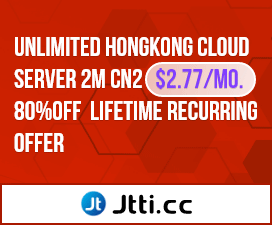In the process of global business expansion, renting overseas servers has become an important strategy for enterprises to optimize access speed, improve data security and avoid local regulatory restrictions. The following are the core solutions and options for overseas server rental.
1. Define business requirements
Target user distribution: If the main customers are located in Europe and the United States, choose a US or European server to reduce latency.
Business type: E-commerce, games, etc., require high concurrency support, high performance cloud server is recommended; Cost-effective options are available for personal blogs or small businesses.
2, choose the right service provider
Global coverage: AWS, Azure, and Google Cloud provide multi-regional data centers for multinational industries.
Cost-effective: Hengtianyuan is suitable for small and medium-sized enterprises, providing stable and reasonable price VPS services.
Region-specific optimizations: For example, Asian users can choose a US server with a CN2 direct connection line to reduce latency.
3. Key considerations
Network delay: The data center near the user group is preferred. For example, the Frankfurt node can be selected for European services.
Data compliance: Businesses dealing with sensitive data should choose a server that is GDPR compliant (Europe) or CCPA compliant (California, USA).
Technical support: Ensure that the service provider provides 24/7 O&M support to prevent faults from affecting services.
4. Cost optimization
Pay as you Go: Cloud services support elastic scaling and avoid waste of resources.
Long-term offers: Some service providers (such as Hengtian Cloud) provide discount packages, suitable for long-term stable demand.
5. Implementation and optimization
Test and monitoring: Perform speed and stability tests after deployment, and continuously monitor performance.
CDN Acceleration: Combine CDN services such as Cloudflare to further enhance the global access experience.
Choosing the right overseas server must balance performance, cost, and compliance to ensure efficient and stable business operation.
1. Define business requirements
Target user distribution: If the main customers are located in Europe and the United States, choose a US or European server to reduce latency.
Business type: E-commerce, games, etc., require high concurrency support, high performance cloud server is recommended; Cost-effective options are available for personal blogs or small businesses.
2, choose the right service provider
Global coverage: AWS, Azure, and Google Cloud provide multi-regional data centers for multinational industries.
Cost-effective: Hengtianyuan is suitable for small and medium-sized enterprises, providing stable and reasonable price VPS services.
Region-specific optimizations: For example, Asian users can choose a US server with a CN2 direct connection line to reduce latency.
3. Key considerations
Network delay: The data center near the user group is preferred. For example, the Frankfurt node can be selected for European services.
Data compliance: Businesses dealing with sensitive data should choose a server that is GDPR compliant (Europe) or CCPA compliant (California, USA).
Technical support: Ensure that the service provider provides 24/7 O&M support to prevent faults from affecting services.
4. Cost optimization
Pay as you Go: Cloud services support elastic scaling and avoid waste of resources.
Long-term offers: Some service providers (such as Hengtian Cloud) provide discount packages, suitable for long-term stable demand.
5. Implementation and optimization
Test and monitoring: Perform speed and stability tests after deployment, and continuously monitor performance.
CDN Acceleration: Combine CDN services such as Cloudflare to further enhance the global access experience.
Choosing the right overseas server must balance performance, cost, and compliance to ensure efficient and stable business operation.








